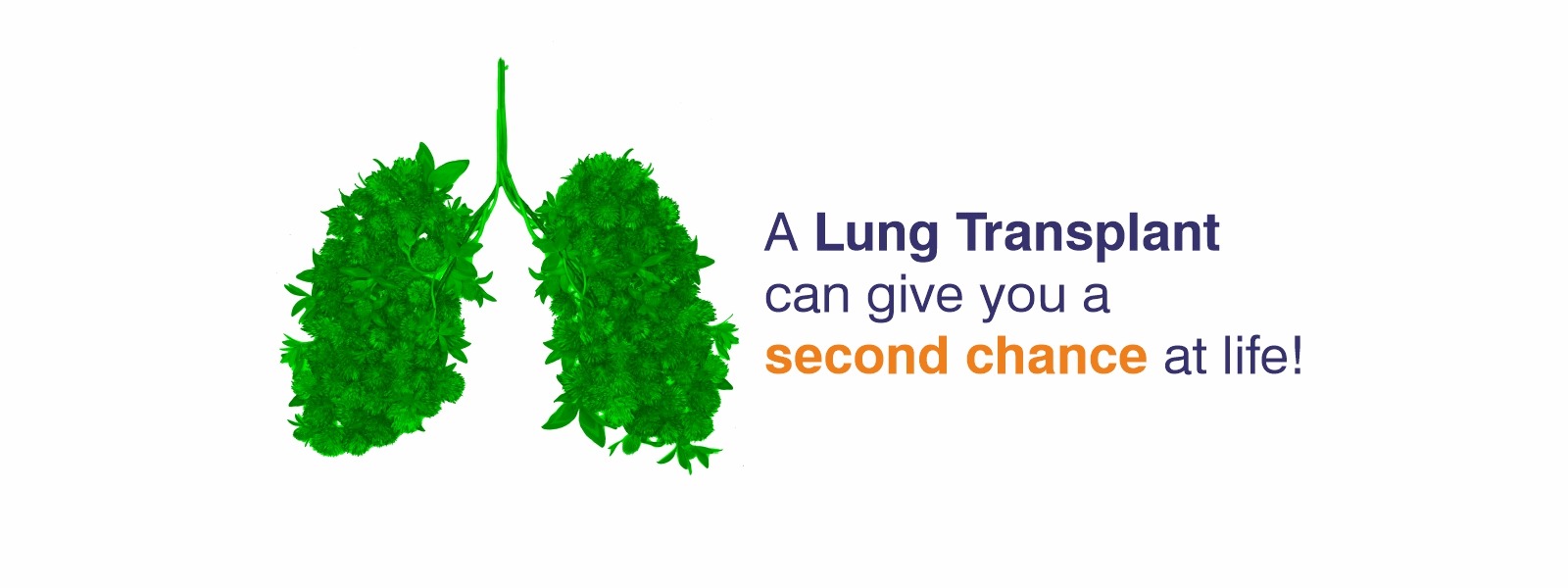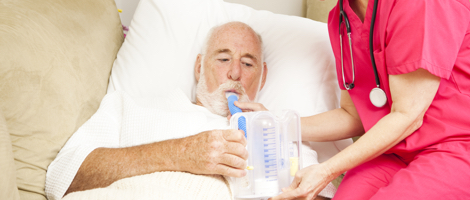

Lung transplant is surgery to transplant a diseased lung and replace it with a healthy lung. Lung transplants are used to improve the quality of life and extend the lifespan for people who have severe or advanced chronic lung conditions.
The surgery may be done for one lung or for both. Lung transplants can be done on people of almost all ages from newborns to adults up to age 65.
Conditions that may damage the lungs enough to require a transplant include:
Inflammatory lung disease that blocks airflow to the lung
A genetic life-threatening disorder that causes damage to the lungs
Chronic lung disease that damages the air sacs and blocks the airflow
Progressive and chronic disease that makes the air sacs stiff and scarred
Type of high blood pressure that blocks the arteries in the lung
Abnormal inflamed tissues that forms in the lung causing breathing difficulties
To know if you need a lung transplant, call the experts Submit Enquiry
Single lung transplant: This is the transplant of one lung.
Double lung transplant: This is the transplant of both lungs.
Bilateral sequential transplant: This is the transplant of both lungs, done one at a time. It’s also called bilateral single.
Heart-Lung transplant: This is the transplant of both, the lungs and the heart taken from a single donor.
Most lungs that are transplanted come from deceased organ donors. This type of transplant is called a cadaveric transplant. Healthy, non-smoking adults who are a good match may be able to donate part of one of their lungs. The part of the lung is called a lobe. This type of transplant is called a living transplant. People who donate a lung lobe can live healthy lives with the remaining lungs.
Still have questions? call our expert team Submit Enquiry
Before getting ready for a transplant, there is a rigorous evaluation process that patients need to go through. This includes:
The primary legislation, Transplantation of Human Organs ACT, was passed in 1994. As per this act, there are certain guidelines to be followed for receiving a transplant depending on the country of residence of the receiver or the state of life of donor. For more information, visit Legalities section of our website.
Read MoreThe transplant team will explain the procedure in detail and resolve any other queries the patient might have. The patient should not eat or drink for 8 hours before the surgery. The following sequence of steps will happen once the operation begins.
The patient is given general anesthesia and will not be awake during the surgery
Intubation tubes will help the patient breathe, provide medication and help with other bodily functions
The surgeon then opens the chest, cuts the main airway and blood vessels
After transection, the structures are attached and the native, diseased lungs are removed
The surgeon will connect the healthy donor lung, reconnect the blood vessels, and close the chest
To learn more about the process, reach out to us Submit Enquiry
As is common with any major surgery, Lung Transplant does have its fair share of complications. The complications of this procedure may include:
After the surgery, the patient will recover in the hospital's intensive care unit (ICU) before moving to a hospital room for one to three weeks.

The doctor may recommend pulmonary rehabilitation after the lung transplant surgery to help the patient regain and improve their breathing. Pulmonary rehabilitation may include exercise training, education, and counselling. Pulmonary function tests will help doctors monitor the patient’s breathing and recovery
Lung Transplants can greatly improve the quality of life of patients suffering from chronic lung conditions. It can bring them a step closer to a normal life. But there are still some precautions patients need to take in order to live a normal life.

Regular Follow Up
Over the next three months, patients will have regular appointments with the transplant team. They will monitor any signs of infection, rejection or other problems

Immunosuppressants
The body may regard the new lung as foreign and attack it. Immunosuppressants prevent this from happening. Patients will need to take these medicines for the rest of their life

Hygiene and Lifestyle
Practicing good hygiene, obtaining routine vaccines, and making healthy lifestyle choices are very important after a lung transplant. Adopting healthy lifestyle choices such as heart-healthy eating and not smoking are vital as well
Note*: Overall, outcomes for lung transplantation are very good, but vary significantly depending on the indication for lung transplant as well as factors associated with the donor.
Survival Rate: 87%
Nitisha's combined heart-lung transplant surgery | Jeevandan, Yashoda Hospitals
As medicine progresses, so does the life expectancy of patients undergoing lung transplant. There have been great strides taken in the last decade or two, which have increased the success rate and the life expectancy of patients.
Increased lifespan of 1 year: 80%
Increased lifespan of 5 years: 50%
Source: www.healthline.com
It is imperative that patients learn about different transplant centres around them before zeroing in on any one of them. A few things to keep in mind while choosing a transplant centre are:
Living with a lung disease can be a painful experience for both the patient and the family. Lung Transplant can greatly improve the quality of life for a patient suffering from end-stage lung disease.
The cost of a lung transplant can vary between 25 - 35 lakhs in India. Patients and their families should check with their insurance companies whether the cost of an organ transplant is within their coverage plans. The cost of the lung transplant is also determined by a few factors like:
Patients who don't live in the vicinity of the hospital and/or have travelled from another city for the transplant also need to keep in mind the cost of stay in the new city. Most patients and their families opt to find a house on a short-term lease in close proximity to the hospital. These costs can add up over the course of a few months.
Speak to the experts, and learn more about the cost of an organ transplant Submit Enquiry
Being diagnosed with a end-stage lung disease is both confusing and frightening for you as well your family. Call to know more about how lung transplant could help you breathe a new life.
Submit Enquiry